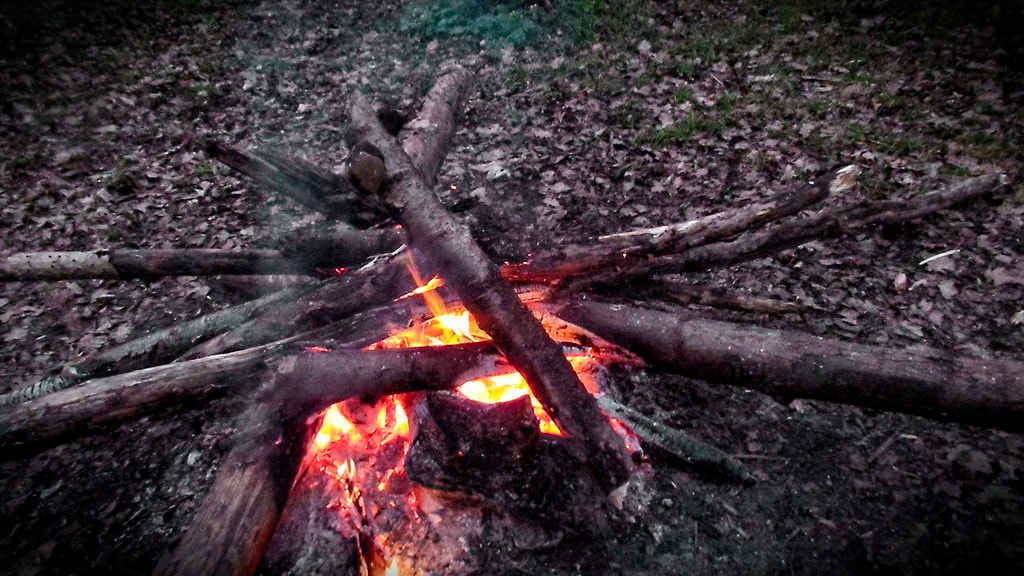Black Metal Evensong
Interpreting Panopticon's
The Echoes of a Disharmonic Evensong
|
|
|
Black Metal Evensong
Let's get one thing straight. The Echoes of a Disharmonic Evensong is not evensong in the traditional Christian, primarily Anglican, kind of way. It does not consist of "prayers, psalms, and canticles, conducted according to a set form, especially that of the Anglican Church in the late afternoon or early evening." You can listen to it in the late afternoon or early evening, but that's where the similarities end. Maybe. What's the genre? I think of The Echoes of a Disharmonic Evensong as Elemental Black Metal or Pagan Black Metal. Performed by an avid outdoorsman, Austin Lunn, it is an aural revolt against orthodox religion: orthodox Christianity or orthodox Satanism. It is not religious in any conventional way. And yet it is worshipful. It invites us to immerse ourselves in the elemental energies of nature as they elicit awe, wonder, fear, and confusion: energies from which we emerge and with which we struggle. If you are influenced by the Bible, you might think of these energies as the elemental "dust" from which all life emerges, according to the second creation story in Genesis Or as the chaos that was with God from the beginning, from which God called the universe into becoming, according to the first story. They are what theologians Bradley Artson and Catherine Keller call the tohu va-vohu (chaos) or The Deep. (See God Almighty? No Way!) The energies of the Deep are with God and maybe even before God, not temporally but ontologically, as the chthonic: part of the underworld. Roots Music The Echoes of a Disharmonic Evensong takes you into the Deep, and in doing so it goes beyond the binary of angelic and demonic, offering a certain kind of "roots" music: roots in the earth, roots in ice, roots in fire, roots in the primordial chaos. Such music is perfect for a worship service at the end of the day, perfect for evensong -- not because it consoles us but because it jolts us. The music/noise transgresses the boundaries of music and social expectation, taking us into a liminal space where, strangely and freely, says the Wesleyan theologian Sam Coker, a divine call can be heard: a call to that subjective intensity toward which all life aims. That's how the philosopher Whitehead sees things. He says that the whole of life, and the universe itself is living, aims at intensity. Who calls us toward this intensity? No need for names. No need to say God. It is enough to hear the calling, itself a calling to the intensity of the Deep, which itself is a calling to something holy, even if not God. X is for Mystery Rudolph Otto once described the Holy as an experience of mysterium tremendum et fascinans: that is, a mystery that is both terrifying and fascinating. In their Alphabet of Spiritual Literacy, Frederic and Mary Ann Brussat add that the Holy, thus understood, is an important part of humanity's spiritual alphabet. A is for Attention and B is for Beauty and C is for Connection and D is for Devotion, etc. And X, they say, is for Mystery. In their words: "The first step in the practice of mystery is to cherish the baffling, curious, hidden, and inscrutable dimensions of your existence and the world around you. Live with paradoxes. Give up the idea that you can always "get it." Be suspicious of all the "ologies" that try to explain everything — from astrology to psychology to theology. Whenever you are honestly stumped by the existence of evil, injustice, or suffering, resist the temptation to ask "Why?" And never be afraid to admit "I don't know." Listening to Black Metal Evensong is one way of practicing the mystery. It is one way of experiencing the Holiness of the chthonic chaos. The best response to the music/noise is to say "I don't know." In the "I don't know" the Holy is experienced apophatically, without definitions. And it's beautiful. |
Why Metal? What is Evensong? The Idea of a Panopticon (from Wikipedia) |
Pagan Black Metal The Band Panopticon (from Wikipedia) |








